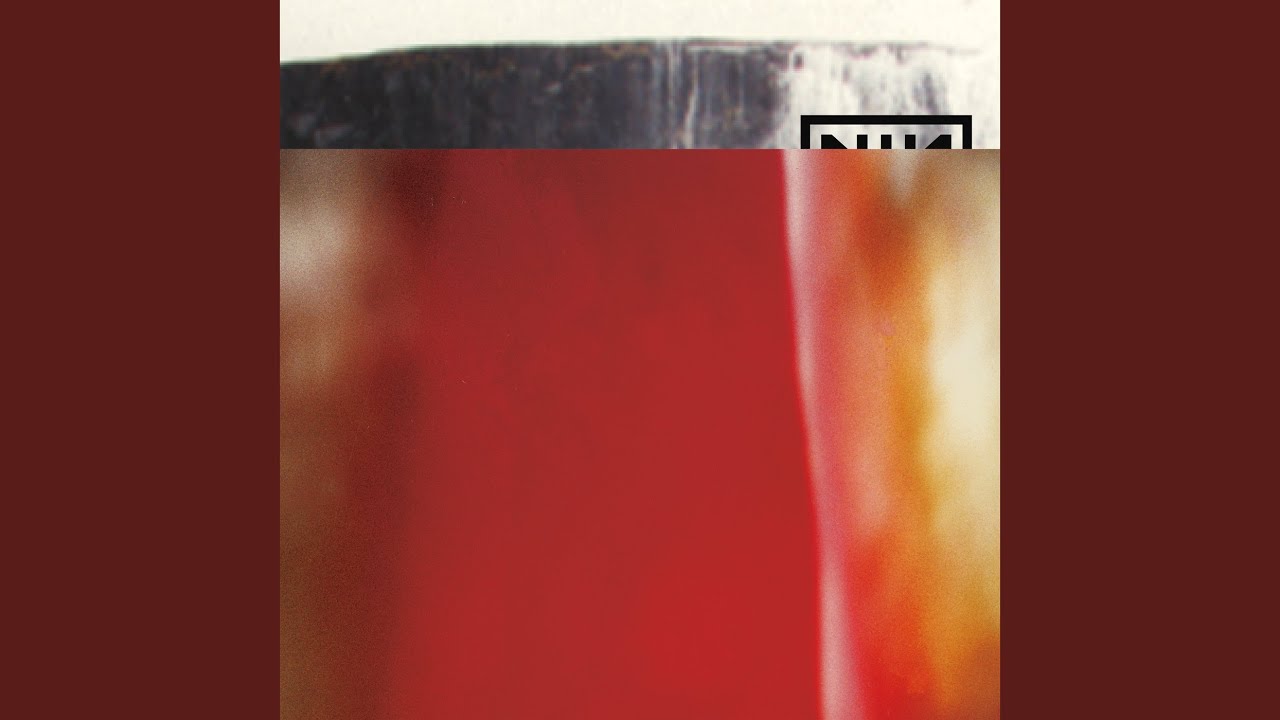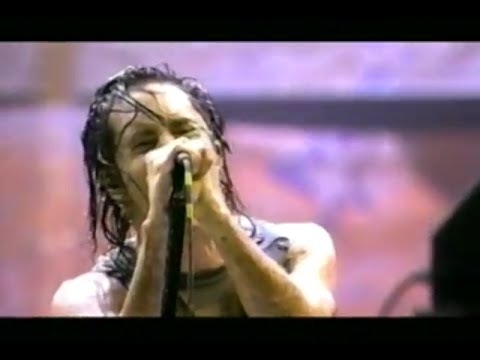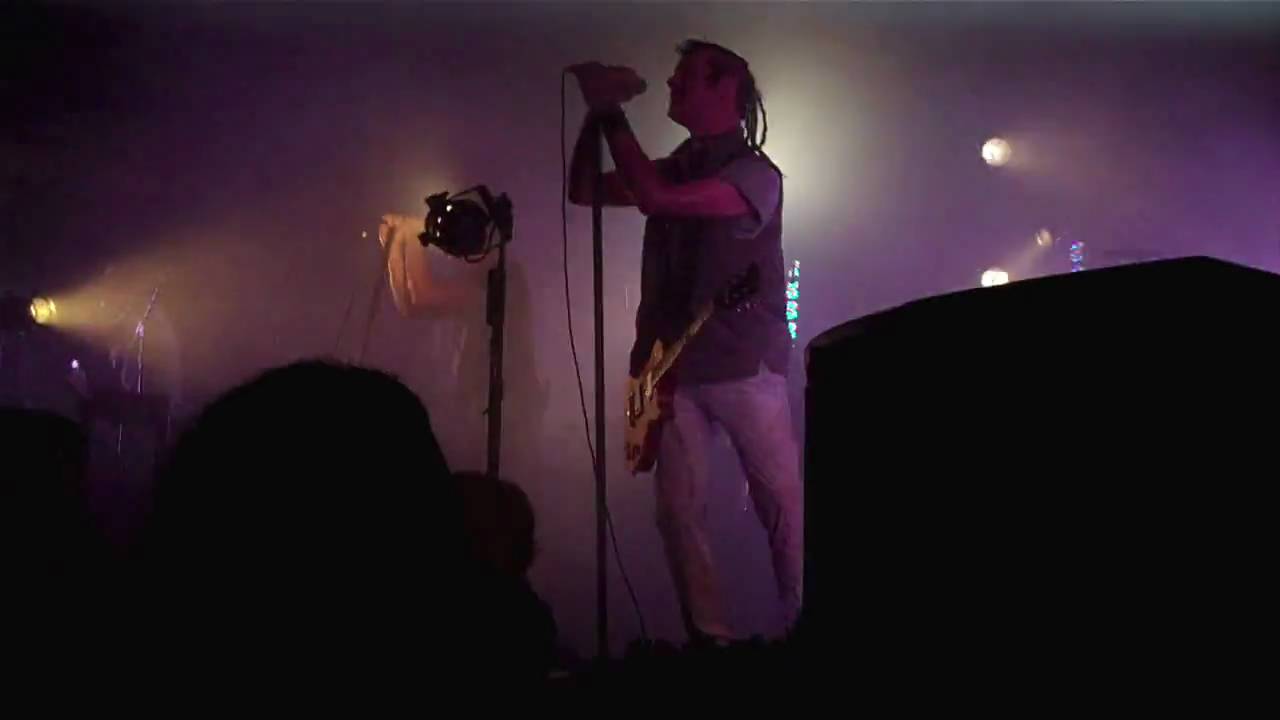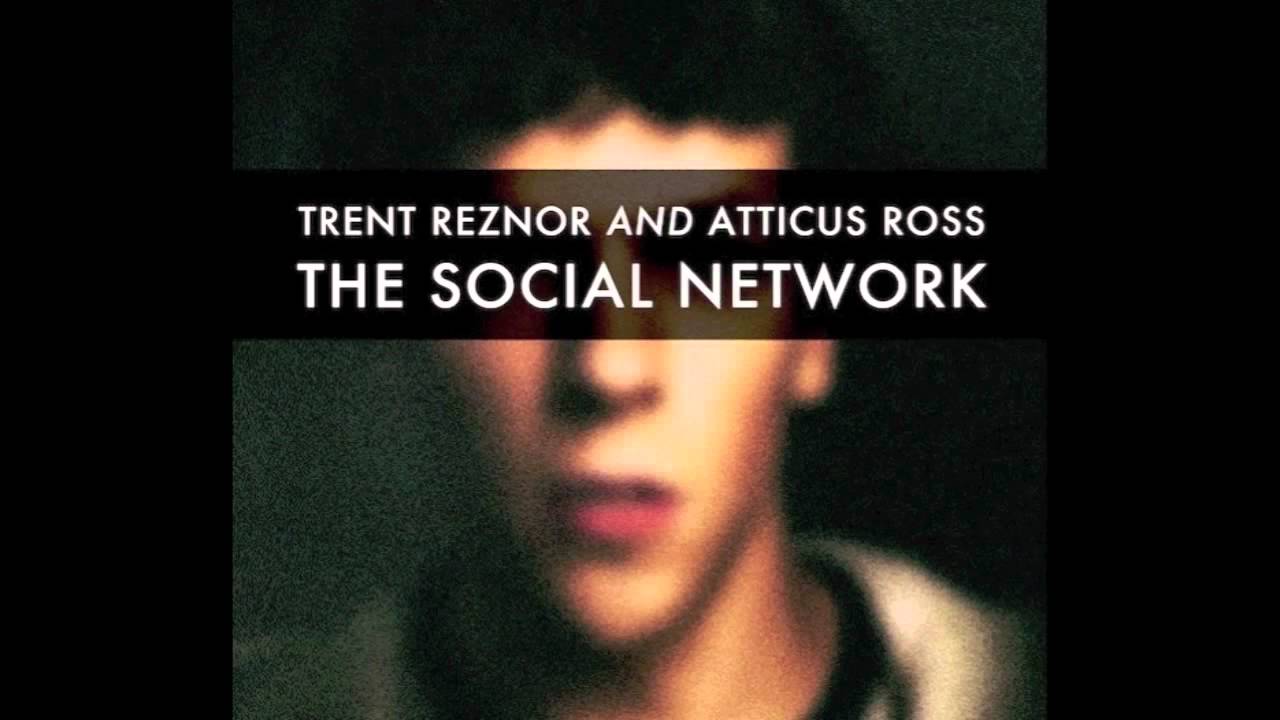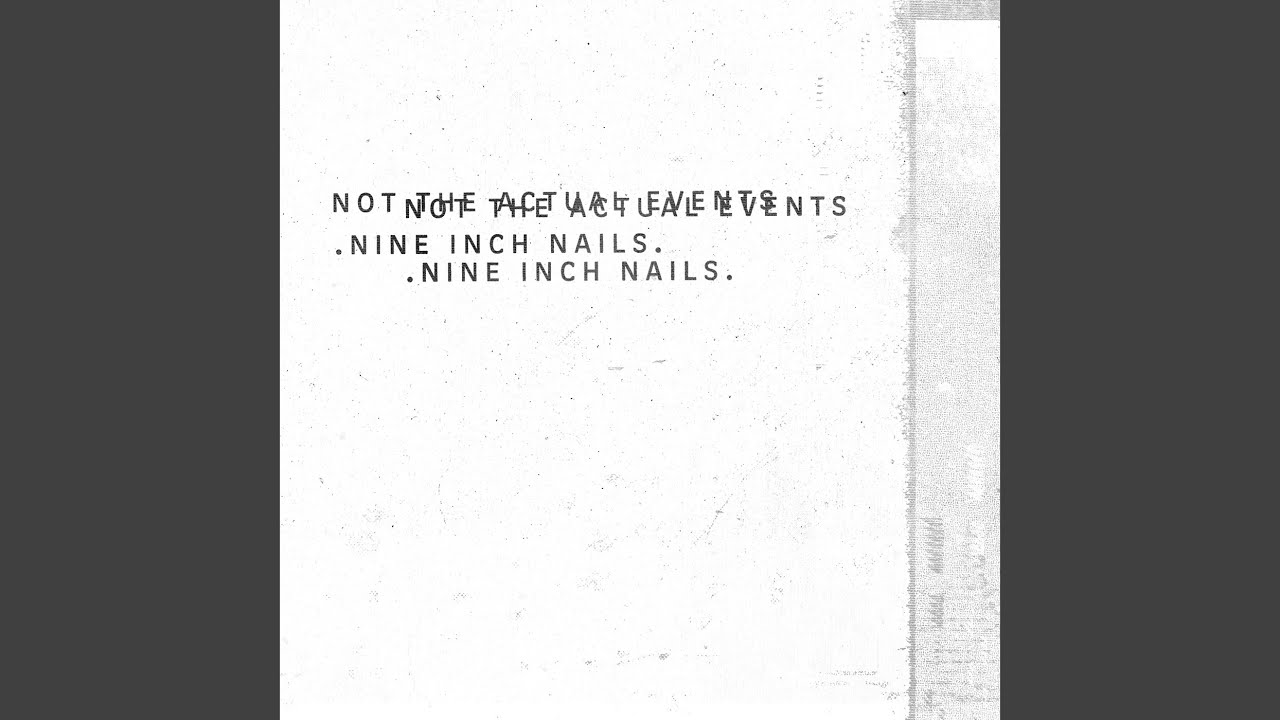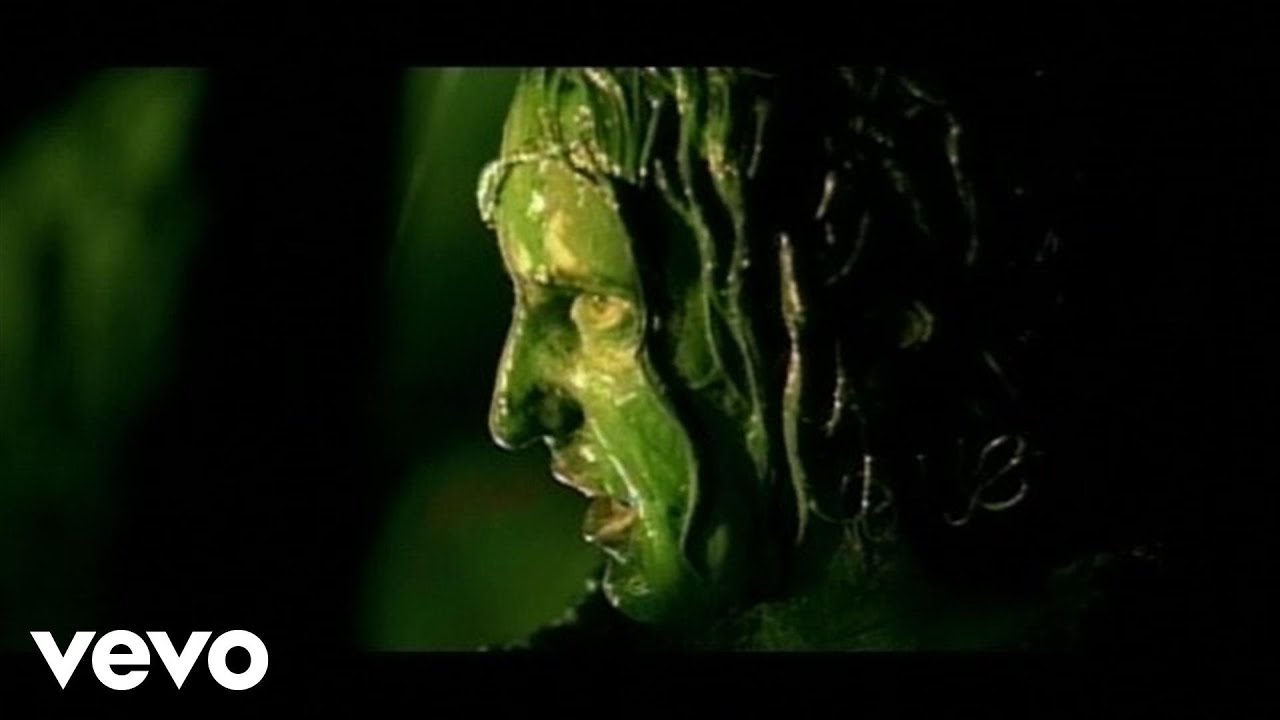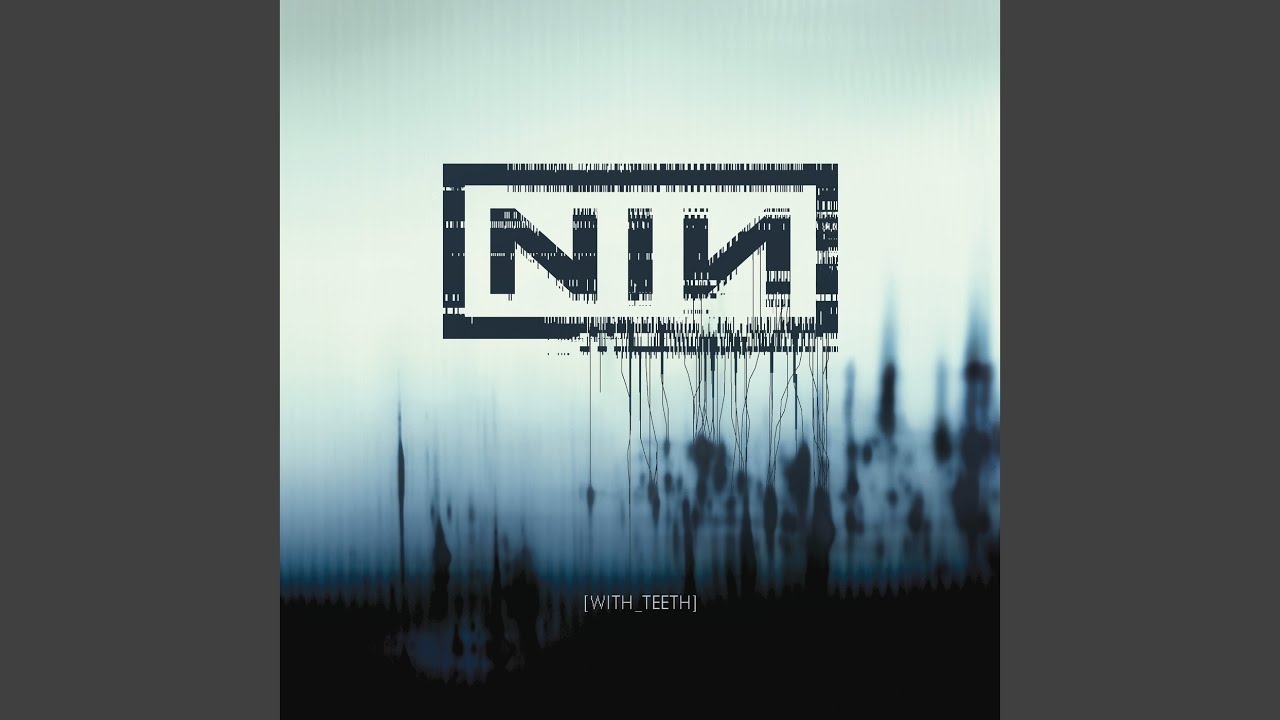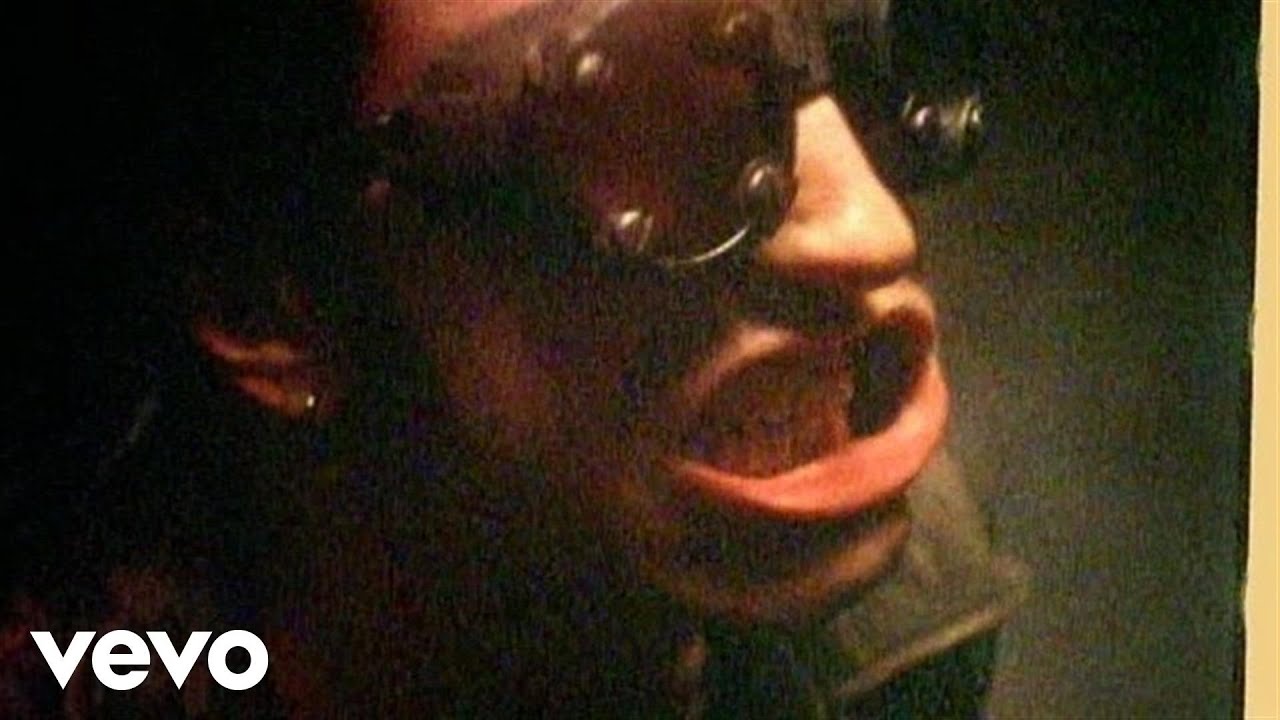These ten neglected Nine Inch Nails songs are personal favourites that I think really display the depth and complexity of Trent Reznor as composer, performer, and songwriter.
I think many NIN fans would never be in doubt of his overall musical achievement since 1989’s Pretty Hate Machine, and this is given fair credence by Nine Inch Nails long-belated induction into the Rock And Roll Hall of Fame sometime this year.
But at the end of the day, it’s just another award. Trent Reznor has consistently helped change the rules of contemporary music and for that alone, even his less beloved works deserve a listen, for their ability to blend genres and the virtuosic variety of the NIN canon.
I WOULD FOR YOU [Hesitation Marks, 2013]
More than a love song, this track provides an increasingly common affirmative moment in Reznor’s music, featured on his “black box” recorder album that is as much about shedding the past as it is necessarily revisiting it. From a series of quite poppy synth-led tracks ‘I Would For You’ stands out as a romantic song that shows Reznor defiantly committing himself to life, its elevating sonics are carried by jet take-off flange effects and bounding echo of some reverse delay vocals. This song fizzes with energy and a kind of hard-won optimism that I think we continue to hear in the new experimentation of Reznor’s trilogy of EPs and soundtrack work. This song is a NIN signature conceived by the same hand of Trent Reznor, but unafraid to let his creative impulse wander outside of any fixed idea of a house style.
JUST LIKE YOU IMAGINED [The Fragile, 1999]
One of Reznor’s many great instrumental tracks, I always felt this song would make great alternative intro music for Match of The Day or rugby highlights, the initial piano figure gives way to an over-psyched muscular guitar aprpeggio that repeatedly builds up and falls again. This is broken by Mike Garson’s [of David Bowie fame – see Aladdin Sane] piano solo built up of a series stilted runs that introduces the harmonic that closes the track. I love ‘La Mer’, perhaps the best instrumental on The Fragile, but this is its rockier cousin which even my toddler likes to bounce along to. The song comes back harder and harder like a series of waves and I love Reznor’s ability to push the envelope within a single track without lapsing into sameness. The song’s neglect comes from the fact that it hasn’t appeared in more films, although it was bizarrely used in the overkill trailer for 300. Reznor’s music is rarely more dynamic and experimental in its use of broken time signatures, and it would be great to hear more songs like this into his soundtrack work, rather than his often more ambient texture building made to sit in the background.
SOMETHING I CAN NEVER HAVE [Pretty Hate Machine, 1989]
It’s hard to choose a song from PHM that is not already a fan favourite, but this being the album that started it all I would cite ‘Something I Can Never Have’ that often slips people’s minds when listing Reznor’s best songs. A near straight piano ballad, its use of sonic atmosphere is refreshing in the context of the record and NIN’s music overall. When so much of NIN’s output is typified by full-force intensity ‘Something’ shows how Reznor’s native talent on the piano enabled him to strip away layers of production that leaves lots of space for the vocals to breathe. The song expresses the classic role of music’s other main obsession: unrequited love/lust. Reznor does it so well, he is utterly convincing in expressing that more innocent form of alienation that would later run riot across his 90s albums, the song is still performed live, often with Reznor going entirely solo on piano, the audience almost silent, feeling what he feels.
RUINER [The Downward Spiral, 1994]
For me ‘Ruiner’ is, or might have been, the great lost single from The Downward Spiral. I love its raw, thrashing sample loop like a lash of razorwire and beat that nods to techno, with Reznor’s rasping fierce yells in the verse to its wall of synths that push forward the tracks message of submission and domination. The message of the song is various but control is the overriding principle: is Reznor fighting with a higher power; addiction or simply tormented by his “better” voice in the vein of Fight Club’s Tyler Durden, driven by inadequacy, the voice of the song is as much at war with himself as with the world. But for all that, there is a twisted kind of love here, like the admiration one might feel caught in a stockholm syndrome situation, or for a dictator or particularly cruel and disdainful lover. The struggle to reconcile self-loathing with being is perhaps the perennial struggle of TDS and I think Ruiner captures this nowhere point, with all the anger and pent-up frustration it brings at being trapped in your own skin. The tension is released in the strangled Comfortably Numb- style guitar solo. Reznor returns to the album’s repeated refrain: “Nothing can stop me now”, tightening the screw as the album takes a deeper, darker turn.
HAND COVERS BRUISE [The Social Network OST, 2011]
OK. This isn’t strictly a NIN song, but being as Trent Reznor is Nine Inch Nails, and his soundtrack collaborator Atticus Ross would officially join the band in 2016, I think its a fair shout. The song is minor masterpiece in establishing a mood and building suspense, the main function of a solid film score. The song’s surface calm belies Reznor’s continued efforts to experiment with new techniques – and for that alone it should be celebrated. The unsettling rhythm was created by furiously bowing a cello then slowing this right, dropping the pitch and slurring the overall sound. I love the way Reznor builds this up with soft piano notes that float over the top and long deep synth notes that seem to emerge from somewhere buried, hinting at the menace later to be revealed in the film. Reznor’s ability to work with the source material, the main themes of the film such as applications of technology, broken relationships and wider disconnection among the human race, all familair NIN tropes, and make them new, while serving the film displays his talent for non-lyrical expression that so many people who dislike NIN underestimate. Of course, the fact that Reznor and Ross would receive an Oscar for their work is no small feat, and sure to be repeated in the future as his non-NIN music only gets better and better. [I would recommend the long slow burn of the Patriots Day OST]
SUCK [Broken, 1992]
Most fans seem to pick any other track but Suck from the consistently great EP/mini-album Broken [ask Trent]. And most it is gold, bridging NIN’s first two albums with plenty of polyrythmic drumming, synth bounce, mad chugging guitars and extreme metal yelling, screaming and shrieking from Reznor. It is as much a record of [necessary] pain as a cry for freedom from the shit deal with Reznor’s first record label, TVT, indeed the record came about as he tried to legally extricate himself from his contract. ‘Suck’ is about as ‘pop’ as Broken gets, and this is important in revealing so much of Reznor’s musical nous in balancing extremes of heaviness and arrangement, sexiness submerged in aggression, a talent that would come to the fore on The Downward Spiral and crop-up repeatedly on later albums.
BURNING BRIGHT [FIELD ON FIRE] – [Not The Actual Events, 2016]
Alike to ‘The Great Destroyer’ [Year Zero, 2007] this is a more savage anthem than even Reznor could have envisioned for his post-Bush American dictatorship [in spite of its title set in 2022, so look forward to that [I really like the remix album: Y34RZ3r0r3mix3d]. Whereas ‘Destroyer’ has a famously “sort-of” dubstep technological breakdown in its second half that makes the song take a ferocious turn, ‘Burning Bright’ is an unrelenting slow dive into a pit of distortion that obscures a strong vocal melody. The song’s title is perhaps inspired by war journalist Michael Herr’s book Dispatches, where he wearily observes of the conflict: “somewhere there always seemed to be something on fire” – the song could have easily appeared on Reznor and Ross’ soundtrack to the excellent Ken Burns’ documentary Vietnam.
Reznor pushes the theme to its (ill)logical conclusion of a burning world that offers an alternative vision of beauty in its willing self-destruction. It’s hard to say whether this is a direct commentary on pollution, global conflict, or simply personal visions of hell. But we see through Reznor’s eyes of fire, the music is punishing distorted drive into beaten drums, Trent ranting behind a mesh of straining guitars and towering synths, it is at once anthemic and imploding under its own weight as Reznor calls to break through the surface and breath. See David Bowie’s Diamond Dogs intro, Future Legend: “This ain’t rock & roll – this is genocide!”
DEEP [Lara Croft: Tomb Raider OST, 2001]
A real oddity in the canon, but comparable to the other “lost” classic, ‘The Perfect Drug’ from 1997. Both songs have a big heavy chorus but I think ‘Deep’ is great because it revisits some of the sound of the Broken EP/mini album and features a densely layered tremolo guitar solo that again shows Reznor pushing at the boundaries of production. It’s certainly neglected as a waypoint between The Fragile and With Teeth and has a weird heist video where Reznor appears as some kind of proto-Old Greeeg [see The Mighty Boosh] The track did ok for Reznor while he was in near hiatus, hitting #18 in the Alternative Rock charts, consider that from the same film U2’s cakewalk ‘Elevation’ was a hit and unavoidably on the radio – everywhere – all summer. ‘Deep’ is a far more considered and challenging rock song, full with much greater…drive.
RIGHT WHERE IT BELONGS [With Teeth, 2005]
In 2000 Trent Reznor crashed out of Nine Inch Nails after a cocaine overdose forced him to take stock and enter rehab. Having pushed the irrational extremes of his last two albums to their limits in both his professional and personal life Reznor uses this song to close the door on a troubled chapter in his life and from With Teeth mark a new beginning.
A lilting piano figure steps lightly between a haze of self-doubt observing broken personal history as Reznor questions the unreal reality of his musical career. What for his listeners was a creative peak became a personal nadir. Without his realising it, Reznor slipped into the self-fulfilling prophecy of The Downward Spiral’s inevitable descent. Caught at his lowest ebb Reznor was suffering from addiction to alcohol and cocaine and despite by all accounts giving his all in performances heading into emotional burnout and physical collapse. The subdued almost mournful tone of Reznor’s voice on the track expresses the world-weary musician struggling to maintain appearances while at his core he was increasingly hollow.
The track is haunted by ghostly crowd noises, the adoring fans that Reznor had increasingly walked towards and away from night after night but somehow always returning to the same place. A great exercise in physical and emotional distancing Reznor is able to view his past from the perspective of history. Thankful for where his music has taken him, like Radiohead’s ‘Everything In Its Right Place’, Reznor has arrived at a better place from which to begin again.
CLOSER [The Downward Spiral, 1994]
OK. I’m closing with a major single, perhaps one of NIN’s most definitive tracks, but I wanted to end with a banger not a whimper. Of course, there is so much to love about ‘Closer’ you could say it shames the rest of the album’s increasingly polarised sharp descent into hell. A pop-song manifested as fin-de-siecle electronica (here cometh Steampunk?) Reznor ensured the song and its attendant video exist within their own warped universe of music that savvily balances the intensity of Reznor screaming “Animmaaaaaaal!” on top of the 36 “fuck”s it contains belies its deftness of touch in the groovy synth lines and piano coda. Where The Beatles’ ‘I Want To Hold Your Hand’ made teenage girls of all sizes piss themselves with furious excitement, ‘Closer’ made people want to fuck, for strippers to bear/bare arms and almost any hapless night-goer who accidentally found themselves in a goth, rock or industrial club night get up and dance. Relentlessly intriguing, ‘Closer’ is the great NIN hit single that never happened, [peaking at 41 in the US Billboard 100 and struggling to number 25 in the UK singles chart] it has nevertheless become world-famous for NIN, along with ‘Hurt’ it is Reznor’s ‘Smells Like Teen Spirit’, the neglect comes from the fact that so many people know it only for its “fuck”s and don’t check out the rest of NIN’s excellent back catalogue. Now 26 years old – ouch – ‘Closer’ remains fresh as ever, hopefully fresh enough to incite a whole new generation of Nine Inch Nails fans.
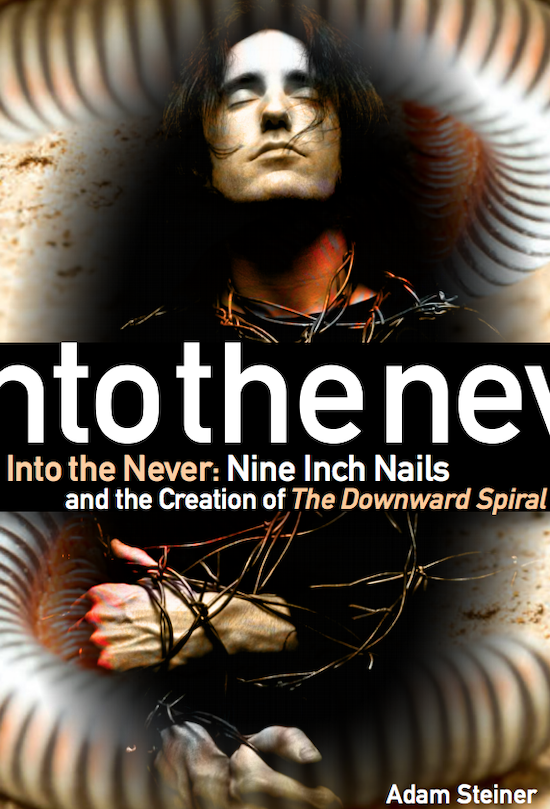
The following is an extract from my new book, Into The Never. In the chapter ‘Real Horrorshow’, I talk about the many inspired and disturbing influences that went into the making of the iconic ‘Closer’ music video…
Reznor would remain divided on what made a ‘good’ music video, and how it might qualify as art, perhaps inspiring him to try harder in making a more substantive video for ‘Closer’, which he knew, in spite [and because] of its many ‘fuck’s had chart potential. He told Plazm in 1994: “What I think could have been a unique new art form has become a series of 3-minute commercials for products. This one might be for Bon Jovi and that one for Pearl Jam and that one for Close-Up tooth polish or whatever. It’s interchangeable. Just look how corporate and unchallenging the whole genre of rock video has become.”
‘Closer’ certainly aspires to music video as art, and more or less gets there, maintaining a balance between thoughtful style and gritty, painterly scenes. Rolling Stone observed: “’Closer’ is a grainy meditation on the great fetish photography of Joel-Peter Witkin, shot partially on supersaturated 1920s film stock, overlaid with the scratchy patina of early surrealist shorts and shot through with indelible images: crucified monkeys; sneering industrialists straight out of a German expressionist print; siblings with their hair braided together.” The use of old hand-wound cameras and its grainy film added an age and tone of decay to the film, which complemented the album’s overall aesthetic.
Reznor jumped straight into a more commercially-aware visual language by choosing to work with Mark Romanek, a pop-savvy film-maker of slick and chic promotional videos for a number of million-selling musicians, he would later write and direct the stylish voyeurism of the movie, One Hour Photo. Reznor said of him: “He could do a beautiful shot, Stanley Kubrick-like in its attention to detail.” This was horror with added nous and subtlety. Gothic victoriana, man and machine, dust age and decay, compressed into an ageless self-contained space, existing outside of time. Romanek tried to produce a contrast between old-fashioned visuals with a technologically advanced song but it would be presented as a lost [and found] artefact. Speaking to Axcess magazine in 1994, Reznor compared ‘Closer’ to the challenges of his previous ‘unwatchable’ music videos: “I think it’s more challenging to work with something that’s more accessible yet is interesting, different, subversive. I don’t direct videos, so it’s a challenge just to hook up with the right people. Work with more mainstream video directors, but take them out of context and experiment.”
From the planning stage, Romanek had been nervous of going too far and for MTV to reject the video outright, such was the network’s power, to re-shoot and make changes would take 3 weeks, and cost around $10,000 in production costs. At one point, the idea of shooting two versions was floated, one explicit and the other ‘clean’ but in the video’s ‘making-of’ documentary Trent says: “Fuck MTV” going ahead with the original concept as planned. As with previous NIN videos, some of the content in Closer was inevitably censored, causing the inclusion of cutely ironic [‘scene missing’] screen cards. The video had included “naked pussy”, and also an explicit anatomically-correct medical drawing,but simply showing genitalia suggestive of sex and birth was instantly cut by censors, Reznor perhaps overplaying his hand from the start so he could fall back to protect most of the video. The partial censorship enhanced the taboo exclusivity of the material, driving forward the song’s message of sexual-fetish expression as both concealment and exposure, denial as a force for desire.
The film is brilliantly iconic and at many points manages to think beyond obvious portrayals of kinky sex and animalistic human behaviours, for example Reznor’s famous image of being suspended, spinning from the ceiling and having his face blasted in a wind tunnel, all weird forms of extreme posture, but not necessarily vulgar, violent or shocking, and avoiding overkill. Romanek thought the drum intro at the start of the song sounded like a heartbeat and along with the industrial hisses and fizzes he created the initial image of the wired-up heart ‘breathing’ in time to the beat.
Carol Siegel noted that Reznor is often the more passive, masochist ‘victim’ in his videos, less the exploitative and sadistic dominator, in keeping with the lyrics of ‘The Becoming’, he is a being designed to absorb pain, this ‘defect’ becomes his hidden strength. In ‘Closer’ Reznor strapped to a chair wearing a ball-gag surrounded by S&M ‘tools’, then bound shirtless by the wrists wearing a blind visor, inspired by a Man Ray photograph, a Saint Sebastian flesh-cushion waiting to be stuck-full with arrows that never come, penetration delayed. While in the lyrics of the song, Reznor’s narrator is seemingly the masculine sexual threat, the video also throws-off this paradigm of absolute control, instead embracing the power-play swapping of roles.
Other ‘high-art’ influences abound: Romanek talks about the famous photograph of the artist, Francis Bacon, posing with a halved cadaver, two sides of pig, the subverted angel’s wings that show still life becoming carcases. The head of a pig, rotting on a spinning stick, with gears running beneath it, is a reference to the album’s frequent pig imagery, and a direct nod to the imagery of Lord Of The Flies. Chiming neatly with the wobbling organ in the music, the video borrows the film-making duo, Brothers Quay’s crude stop-motion short film, Streets of Crocodiles, naivete, conjuring up the Brothers Grimm brutally realist fantastical horror, dream-like sequences that can easily spill over into nightmares. Reznor and Romanek agreed on the thawted elegance of Joel Peter Witkin’s photography: “I think they are beautiful, although probably most people would say they’re grotesquely ugly, but to me that’s what makes it more interesting.”
In keeping with the video’s staging of spectacle, voyeurism and the power of perspective, there are some probing shots in which an older man is seen hovering behind a peep hole, observing the viewer. This image is based upon social-realist artist George Tooker’s painting, Government Bureau [1956]. People wander through a stark, bureaucratic office maze, nodding to Franz Kafka, the officials partially obscured behind talking windows, both trapped and empowered within their defensive positions. There is an echo of Jeremy Bentham’s panopticon prison design which housed inmates within a central tower, enclosed by an outer circle where only one guard could observe them at all times, but not be seen himself, creating a half-way relationship of bondage with the spectator and the prisoner as spectacle. Another Tooker painting is referenced where a boy is shown holding a spiral shell and staring straight out from the canvas at the viewer; as in the video, Reznor’s copies the pose and his distant eyes suddenly twitch to one side, looking right at us.
Alex S. Reed noted that without becoming actual pornography, the ‘Closer’ video occupies the form of the forbidden, sacrosanct – it toys with ebbing sensuality, denied, a more considered and subtle approach than NIN’s earlier, ultra-explicit videos. As cinematic as the scope and range of Reznor’s music on The Downward Spiral is, it was directly informed by visual art references and in his the album’s music videos for ‘March’, ‘Closer’ and ‘Hurt’, pointing towards his more nuanced soundtrack work.Reznor’s increased engagement with sonic perspective and distancing, developed from his earlier horror, snuff and schlock genre experiments, enabled him to reimagine transgressive challenges and align them to films that would come to mirror themes of struggle between power and control, albeit through a glass, darkly.
Into The Never: Nine Inch Nails And The Creation Of The Downward Spiral by Adam Steiner is published by Hal Leonard



